3dExport
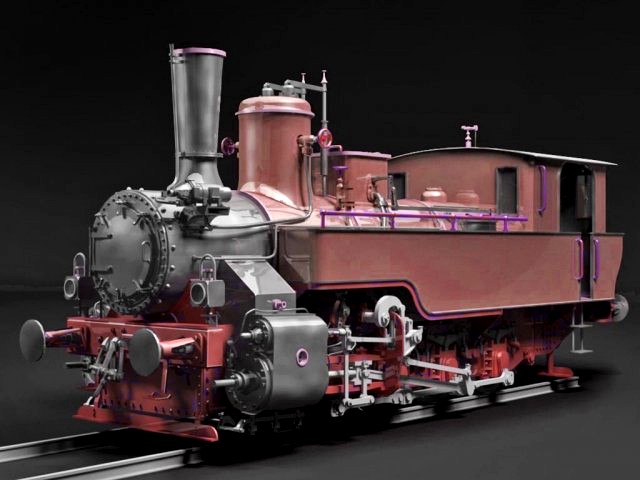
mav class 475 steam engine locomotive tank engine for classic train
by 3dExport
Last crawled date: 1 year, 10 months ago
mav class 475 steam engine locomotive tank engine for classic train ______________________________________________________________________________________ i'm using maya 2022 & 3ds max. ______________________________________________________________________________________ model formats:- *.3ds,*.max,*.obj,*.skp ______________________________________________________________________________________ information about locomotive steam engine :- in most locomotives, the steam is admitted alternately to each end of its cylinders, in which pistons are mechanically connected to the locomotive's main wheels. fuel and water supplies are usually carried with the locomotive, either on the locomotive itself or in a tender coupled to it. variations in this general design include electrically-powered boilers, turbines in place of pistons, and using steam generated externally. steam locomotives were first developed in the united kingdom during the early 19th century and used for railway transport until the middle of the 20th century. richard trevithick built the first steam locomotive in 1802. salamanca, built in 1812 by matthew murray for the middleton railway, was the first commercially successful steam locomotive.[2] locomotion no. 1, built by george stephenson and his son robert's company robert stephenson and company, was the first steam locomotive to haul passengers on a public railway, the stockton and darlington railway, in 1825. in 1830 george stephenson opened the first public inter-city railway, the liverpool and manchester railway. robert stephenson and company was the pre-eminent builder of steam locomotives in the first decades of steam for railways in the united kingdom, the united states, and much of europe.[3] towards the end of the steam era, a longstanding british emphasis on speed culminated in a record, still unbroken, of 126 miles per hour (203 kilometres per hour) by lner class a4, 4468 mallard.[4] in the united states, larger loading gauges allowed the development of very large, heavy locomotives such as the union pacific big boy, which weighed 540 long tons (550 t; 600 short tons) and had a tractive effort of 138,200 pounds-force (615,000 newtons).[5][note 1] from the early 1900s, steam locomotives were gradually superseded by electric and diesel locomotives, with railways fully converting to electric and diesel power beginning in the late 1930s. the majority of steam locomotives were retired from regular service by the 1980s, although several continue to run on tourist and heritage lines. thank you
Similar models
cg_trader
$15

Rocket Train
...irst steam locomotive, it was the first to bring together several innovations to produce the most advanced locomotive of its day.
3dwarehouse
free

British Railways No. 46258 ''Robert Stephenson'' (1948)
...re built with only 2 sets of valve gear. it's also the only 4-cylinder locomotive built with 4 sets of stephenson valve gear.
3dwarehouse
free

British Railways No. 46258 ''Robert Stephenson'' (1951)
...re built with only 2 sets of valve gear. it's also the only 4-cylinder locomotive built with 4 sets of stephenson valve gear.
cg_trader
$10

jnr c11
...m locomotive train industrial machine industrial vehicle industrial machine steam train steam engine steam locomotive steam train
3dwarehouse
free

LMS Princess Coronation Class Steam Train
...m. #british #class #coal #coronation #express #lms #locomotive #passenger #princess #rail #railways #steam #train #transportation
3dwarehouse
free

British Railways No. D200 (1958)
...ctric between 1958 and 1962. they were numbered d200-d399. they were, for a time, the pride of british rail’s early diesel fleet.
grabcad
free

Stephenson's Rocket
... definitely most famous steam locomotive in history. rocket is the greatest project made by george stephenson and his son robert.
cg_trader
$3

Electric Multiple Unit - Hitachi
...on track wagon railway steam railway railroad locomotive vehicle steam train metro train steam locomotive steam train train track
cg_trader
$5
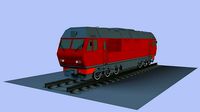
Diesel locomotive
...shipping wheel city engine transportation service train tram electric commuter vehicle diesel engine electric vehicle train wheel
3dwarehouse
free

Stephenson Steam Locomotive
...one of my first 'real' projuects hope it turned out ok =\ #car #locomotive #steam #stephenson #train #train_car #traincar
Mav
3ddd
$1

Стол MAV
...стол mav
3ddd
письменный , mav
стол mav
turbosquid
$75

MAV 3DS
... available on turbo squid, the world's leading provider of digital 3d models for visualization, films, television, and games.
3ddd
$1

Столик туалетный MAV Art.7058
...niture/sleeping/classic/italjanskaja-spalnja-laltra-notte-2-fabriki-mav/italjanskaja-spalnja-laltra-notte-2-fabriki-mav
3ddd
$1

Шкаф MAV. Коллекция Gonzaga art.1001
... gonzaga
шкаф mav. коллекция gonzaga art.1001http://www.mav-madeinitaly.it/ru/prodotti/tradizione/
turbosquid
$79

1963 Mav Steam Locomotive 399
...ve 399 for download as ma, 3ds, max, obj, c4d, fbx, and blend on turbosquid: 3d models for games, architecture, videos. (1300555)
3ddd
$1

MALERBA. The 5th Avenue
...200х235х115h mav-161 california size bed см 231х245х115h nightstand - mav062 nightstand...
3d_export
$99

Mazda 5 2011 3D Model
...3dexport mazda mazda5 mazda-5 2010 2011 van minivan mpv c-mav passenger family bus japan sliding doors compact cargo c-max...
3d_ocean
$89

Mazda 5 2011
...mazda 5 2011 3docean bus c-mav c-max cargo compact family japan mazda mazda-5 mazda5 minivan...
3d_sky
free

Table MAV
...table mav
3dsky
desk mav
table mav
475
turbosquid
$25

basin (475)
...e 3d model basin (475) for download as 3dm, skp, 3ds, and dwg on turbosquid: 3d models for games, architecture, videos. (1520888)
design_connected
$16

Teak Chair 475
...teak chair 475
designconnected
alias teak chair 475 chairs computer generated 3d model. designed by alberto meda.
3d_export
$60

Architecture 475 3D Model
...lege campus max street landscape commercial building medical hospital offices
architecture 475 3d model lotusmodel 48399 3dexport
humster3d
$50

3D model of Wildey .475 Magnum
... detailed 3d model of wildey .475 magnum in various file formats. all our 3d models were created maximally close to the original.
3d_export
$160

3d building 475 3D Model
...metropolis street block detailed definition realistic skyscraper huge collection
3d building 475 3d model kanhtart 44511 3dexport
3d_export
$50

3D Home 475 3D Model
... chair furniture texture table lamp apartment rug carpet restaurant hotel sitting
3d home 475 3d model richard3015 46324 3dexport
turbosquid
$29

Odeon Light Norin 2748 / 1W ODL15 475
...norin 2748 / 1w odl15 475 for download as max, obj, and fbx on turbosquid: 3d models for games, architecture, videos. (1239369)
3d_export
$20

decorative plants in flower pots for the interior 475
...alm<br>rhapis - bamboo palm tree rapis<br>young coconut tree<br>cocos nucifera<br>plants for the interior
3ddd
free

Mats Broberg and Johan Ridderstrale Bird Table
...ridderstrale bird table 3ddd offecct , круглый размеры: ширина 475 мм, высота 500 мм, длина 475 мм. дизайн: mats...
3ddd
$1

EGLO BIANDRA 92385
...eglo biandra 92385 3ddd eglo d 230 h 475 ...
Locomotive
archibase_planet
free
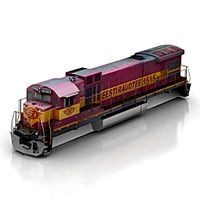
Locomotive
...locomotive
archibase planet
locomotive engine
locomotive n101011 - 3d model (*.3ds) for exterior 3d visualization.
archibase_planet
free

Locomotive
...locomotive
archibase planet
locomotive engine
locomotive n181207 - 3d model (*.gsm+*.3ds) for interior 3d visualization.
archibase_planet
free

Locomotive
...locomotive
archibase planet
locomotive engine
locomotive n020508 - 3d model (*.gsm+*.3ds) for interior 3d visualization.
archibase_planet
free
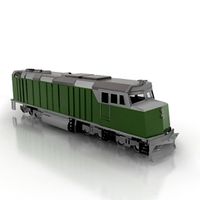
Locomotive
...locomotive
archibase planet
train locomotive engine
locomotive n220708 - 3d model (*.gsm+*.3ds) for interior 3d visualization.
archibase_planet
free

Locomotive
...locomotive
archibase planet
locomotive engine railway transport
locomotive n050609 - 3d model (*.gsm+*.3ds) for 3d visualization.
archibase_planet
free

Locomotive
...
archibase planet
locomotive railroad engineering engine
locomotive te7 n200711 - 3d model (*.3ds) for exterior 3d visualization.
archibase_planet
free
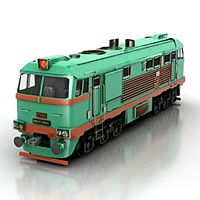
Locomotive
...ocomotive
archibase planet
locomotive engine
locomotive m62 u0940 n230810 - 3d model (*.gsm+*.3ds) for exterior 3d visualization.
archibase_planet
free

Locomotive
...rchibase planet
locomotive engine railroad engineering
locomotive tep70 n280611 - 3d model (*.3ds) for exterior 3d visualization.
archibase_planet
free

Locomotive
...
archibase planet
locomotive engine railroad engineering
locomotive er9 n200711 - 3d model (*.3ds) for exterior 3d visualization.
archibase_planet
free
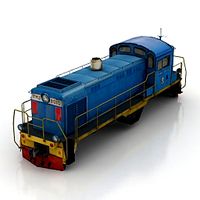
Locomotive
...ase planet
locomotive engine railroad engineering
locomotive tgm3 n120711 - 3d model (*.gsm+*.3ds) for exterior 3d visualization.
Steam
3d_export
$28
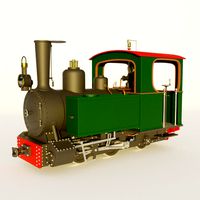
steam locomotive
...steam locomotive
3dexport
## steam locomotive
turbosquid
$1

Steam
...m
turbosquid
royalty free 3d model steam for download as obj on turbosquid: 3d models for games, architecture, videos. (1626376)
3d_ocean
$15

Steam iron
...ign made by me. you can use it for your projects and games as you want. iron, steam iron, philips,siemens, clothes,ironing, tefal
3d_export
$5

steam locomotive
...steam locomotive
3dexport
road. low-poly model steam train
3d_export
$10
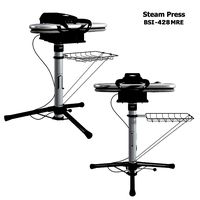
bitron steam press
...bitron steam press
3dexport
bitron steam press
3d_export
$5

sauna steam room
...sauna steam room
3dexport
sauna steam room
3d_export
$10

steamed buns
...steamed buns
3dexport
3d_export
$7
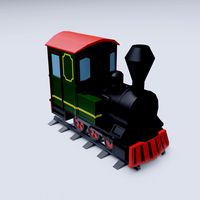
steam locomotive
...steam locomotive
3dexport
turbosquid
$100
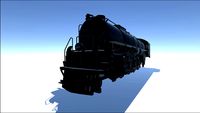
Steam Train
...osquid
royalty free 3d model steam train for download as fbx on turbosquid: 3d models for games, architecture, videos. (1166089)
turbosquid
$49

Steam machine
...quid
royalty free 3d model steam machine for download as fbx on turbosquid: 3d models for games, architecture, videos. (1486836)
Train
archibase_planet
free

Train
...train
archibase planet
train fast train high-speed train
train speed n221014 - 3d model (*.3ds) for exterior 3d visualization.
3d_ocean
$29

Train
...train
3docean
locomotive train
hello i havolk train
3d_export
$5

train
...train
3dexport
train
3d_export
$5

train
...train
3dexport
train
3d_export
$10

train
...train
3dexport
a lowpoly train...
3ddd
$1

train
...train
3ddd
паровоз
train old
3d_ocean
$12

Train
...train
3docean
child children model old retro toy train wood wooden
old wooden children’s train.
3d_ocean
$5
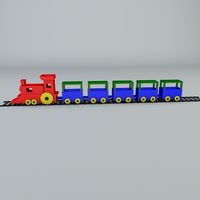
toy train
...toy train
3docean
kids toy train
3d model toy train
turbosquid
$55
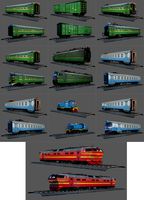
train
...n
turbosquid
royalty free 3d model train for download as max on turbosquid: 3d models for games, architecture, videos. (1477635)
turbosquid
$50

train
...n
turbosquid
royalty free 3d model train for download as max on turbosquid: 3d models for games, architecture, videos. (1419091)
Tank
archibase_planet
free
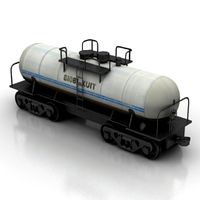
Tank
...ibase planet
tank tank-wagon tank-truck tank-car
tank train small n110113 - 3d model (*.gsm+*.3ds) for exterior 3d visualization.
3d_ocean
$49

Tank
...tank
3docean
kv-1s tank
tank kv-1s
archibase_planet
free
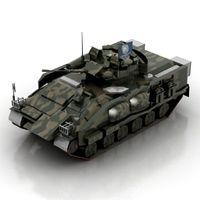
Tank
...tank
archibase planet
tank medium tank
tank wmcvun n070712 - 3d model (*.3ds) for exterior 3d visualization.
archibase_planet
free
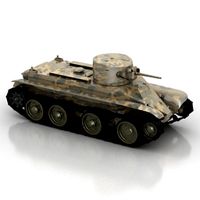
Tank
...k
archibase planet
tank light tank bt-2 high-speed tank
tank bt-2 n200814 - 3d model (*.gsm+*.3ds) for exterior 3d visualization.
3d_export
$5

tanks
...tanks
3dexport
tanks
3d_export
free

tank
...tank
3dexport
tank
archibase_planet
free
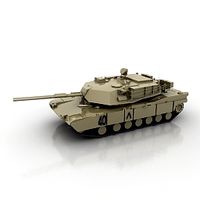
Tank
...tank
archibase planet
tank heavy tank
tank abrams l n090511 - 3d model (*.3ds) for exterior 3d visualization.
archibase_planet
free

Tank
...tank
archibase planet
tank medium tank
tank m60 n070712 - 3d model (*.gsm+*.3ds) for exterior 3d visualization.
archibase_planet
free
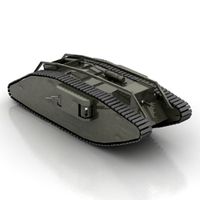
Tank
...tank
archibase planet
tank medium tank
tank female n070712 - 3d model (*.gsm+*.3ds) for exterior 3d visualization.
3d_export
$5
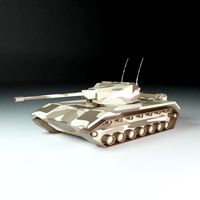
tank
...tank
3dexport
tank lowpoly
Class
3d_export
free

Class room
...class room
3dexport
class room 3d model
3ddd
free

Capellini / Class
...capellini / class
3ddd
capellini
стул class фирмы capellini
3ddd
free

Valmori - Class
...valmori - class
3ddd
valmori
bed from valmori model class
3ddd
$1

LUCECREA CLASS
...lucecrea class
3ddd
lucecrea class
торшер фабрики lucecrea class_коллекция
bakara contract_art.376351 da a
turbosquid
$15
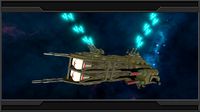
BaikaL class Frigate and UraL class Corvette
... available on turbo squid, the world's leading provider of digital 3d models for visualization, films, television, and games.
3ddd
$1

vibieffe class armchair
...vibieffe class armchair
3ddd
vibieffe
vibieffe class armchair
3ddd
$1

Baccarat Glass Class
...
источник:http://www.select-interiormarket.com/en/baccarat-glass-class-chair-2601025-philippe-starck
текстуры имеются
turbosquid
$85

Class Brooklyn
...alty free 3d model class brooklyn for download as jpg and max on turbosquid: 3d models for games, architecture, videos. (1461215)
3d_export
$5

class room
...class room
3dexport
turbosquid
$69

Mercedes Class
...d model mercedes class for download as 3ds, obj, c4d, and fbx on turbosquid: 3d models for games, architecture, videos. (1440493)
Classic
3ddd
$1

classic mirror
...classic mirror
3ddd
classic mirror for classic interior design
3d_ocean
$19

Classic curtains
...classic curtains
3docean
architectural classic classical curtains decoration details drapes
classic curtains 3d max2011 fbx obj
3d_ocean
$12

classic watch
...classic watch
3docean
classic old watch
quality model classic watches
3d_export
$5

classic tools
...classic tools
3dexport
classic tools for modern and classic spaces inlaid carving
3d_export
$5

classic tools
...classic tools
3dexport
classic tools for modern and classic spaces inlaid carving
3d_export
$5

classic tools
...classic tools
3dexport
classic tools for modern and classic spaces inlaid carving
turbosquid
$50

classic
...turbosquid
royalty free 3d model classic for download as max on turbosquid: 3d models for games, architecture, videos. (1182819)
turbosquid
$20

classic
...turbosquid
royalty free 3d model classic for download as 3ds on turbosquid: 3d models for games, architecture, videos. (1346242)
3d_export
$25

classic guitar
...classic guitar
3dexport
the classical guitar is a member of the guitar family used in classical music.
3d_ocean
$19

Sofa classic
...
3docean
classic classical couch design furnishings furniture interior sofa style traditional
sofa classic max2011 fbx obj unwrap
Engine
3d_export
$5
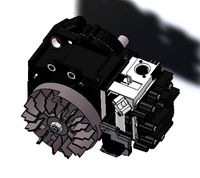
engine
...engine
3dexport
engine
3d_export
free
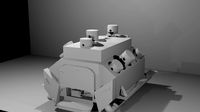
Engine
...engine
3dexport
engine
archibase_planet
free
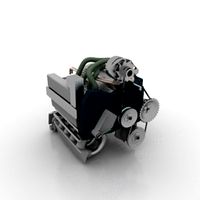
Engine
...engine
archibase planet
motor engine
engine - 3d model for interior 3d visualization.
archibase_planet
free
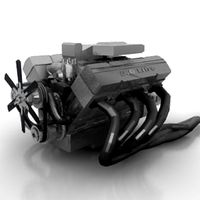
Engine
...engine
archibase planet
motor engine mover
engine n170708 - 3d model (*.3ds) for interior 3d visualization.
archibase_planet
free
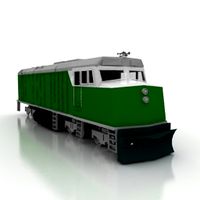
Engine
...engine
archibase planet
engine locomotive train
locomotive - 3d model for interior 3d visualization.
turbosquid
$1

ENGINE
...osquid
royalty free 3d model ic engine for download as sldas on turbosquid: 3d models for games, architecture, videos. (1382781)
3d_export
$5

engine
...engine
3dexport
3d_export
free

engine
...engine
3dexport
turbosquid
$7

Engine
...d model animated engine mograph element3d for download as c4d on turbosquid: 3d models for games, architecture, videos. (1380716)
turbosquid
$1
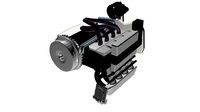
ENGINE
...y free 3d model engine for download as max, 3ds, stl, and fbx on turbosquid: 3d models for games, architecture, videos. (1673703)
